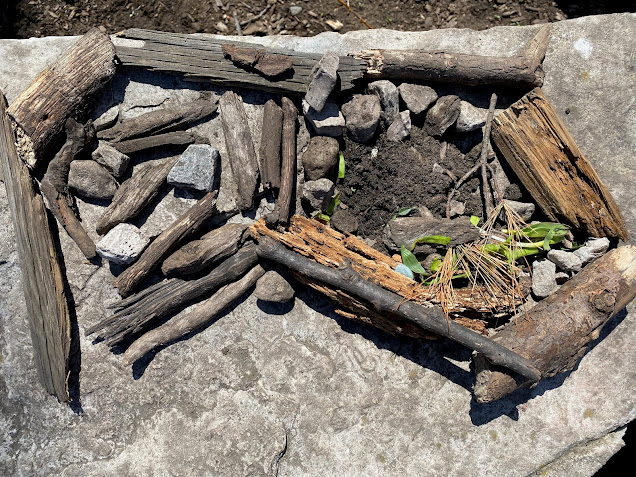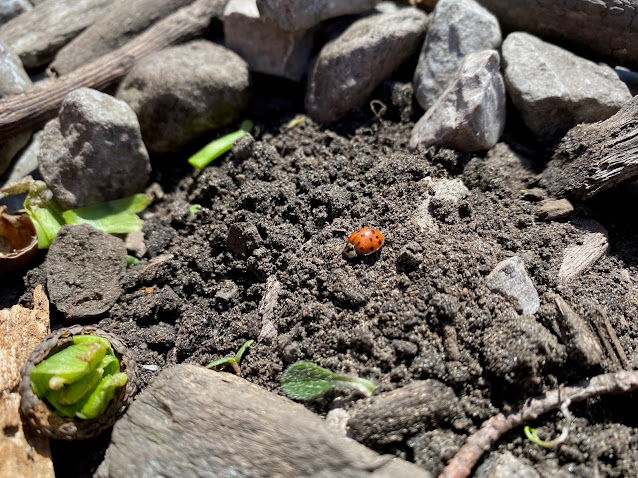"Look deep into nature and then you will understand everything better."
Albert Einstein
The
children were gathered around a large landscaping rock, working
together to arrange twigs and stones they had picked from the ground
nearby.
"I
think that this side should be the living room and the bedroom can be
over here," Jack gestured as he spoke. "The living room will be next to
the bedroom and the ladybug can crawl across by using this little
bridge."
"So what are these little sticks here for?" Mary pointed to a little row of twigs placed next to each other.
"Oh, those are going to be the bed." Olive answered.
"But that's way too big to be a ladybug's bed," Mary responded.
"Oh," Olive pondered. "I didn't think about that."
"That's okay," Mary smiled. "We'll just find more than one ladybug and then the bed will be the perfect size."
Spring
was in the air and the children were excited to discover that many
little creatures were venturing out into the warm sun. Ladybugs, rolly
pollies, and worms were abundant and this sparked the children's
imaginations. Eager to 'help' the insects the children set to work
building little houses for them. They searched the yard to gather
materials they felt would be best suited to this task. I resisted the urge to bring out materials from the classroom because I wanted the children to be resourceful and use their imaginations by only having access to natural loose parts.
Children first started by capturing an insect from the yard. The insect caught would determine the size and type of house built. Creatures that had wings and flew required a different style of house than those that were slow moving.
Next the children sketched and planned the appearance of the house. They considered the available materials (e.g., sticks, stones, leaves, flowers, landscaping rocks) and used clipboards, paper and pencils to draw their designs. Once satisfied with their blueprints they began the building process. This occurred over the course of several days as children revisited, reflected and refined their houses. Sometimes new insects would be found and this would cause the process to be restarted. It was interested to sit back and observe the children as they worked and discussed their creations. I was available to offer support and encouragement as needed but left the children to their own ideas and explorations.
For many educators a barrier to spending significant amounts of time outside is a lack of human made resources. This experience demonstrates that when children are invited to follow their ideas and only use materials that Mother Nature provides, the potential for math learning is as endless as their imaginations.
Where's the math?
- considering and comparing the characteristics (e.g., size, shape, colour, texture) of different loose parts including stones, sticks, acorns, leaves and flowers
- spatial awareness as loose parts were pieced together to form the house
- spatial reasoning as children considered how an insect might move through and manipulate elements in the structure
- proportional reasoning as the house and its characteristics needed to be constructed to an appropriate size for the insect
- process of design as houses were planned, built and refined to best suit the interests and needs of the children (and insects)
- counting the number of loose parts needed
- sorting as the loose parts were collected and placed into groups
- calculating area and perimeter as the outside of the structure was made (e.g., rocks as the walls) and the inside decorated (e.g., sticks for the floor)
- growth mindset, flexibility and perseverance revising the plan when it didn't work as anticipated
- articulation of math ideas as children explored one another's designs and asked questions for clarification and made observations about one another's work
- the sharing of math thinking as photos were taken of each structure and children presented their work during the end of the day consolidation circle.






No comments:
Post a Comment